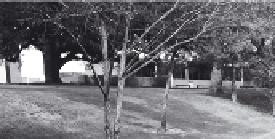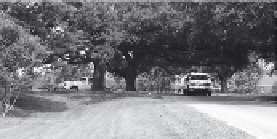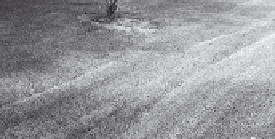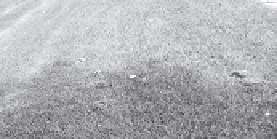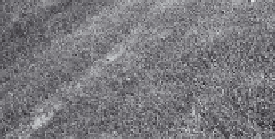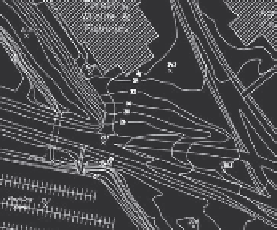Agriculture Reference
In-Depth Information
such as oil or various chemicals found in a parking lot, or chemicals such
as pesticides or fertilizer carried from nearby planting areas by the sur-
face water flow.
33
32
31
30
29
28
27
26
Figures 12.7-a and 12.7-B
Photograph diagram of drainage swale along the side of a road and a plan view of
same location of drainage swale along the side of the same road
Figures 12.7-A and 12.7-B give an example of a drainage swale run-
ning along a road. The process of creating a drainage swale is shown in
Figures 12.8-A through 12.8-D. In this example, the designer is to create
a drainage swale that also functions as a bioswale.
Decide where you want a swale and the desired slope. Establish a
slope for the swale that is a minimum of 2% and no steeper than 12% to
15%. On terrain that has less erosive soils, steeper slopes are possible.
Generally, swales with steeper slopes carrying high volumes of water
tend to cause erosion.
In this case a slope of 5% is being considered. In order to achieve a
5% slope, contours will be positioned 20 feet apart.
S = V / H
.05 + 1 / H
H = 20 feet


